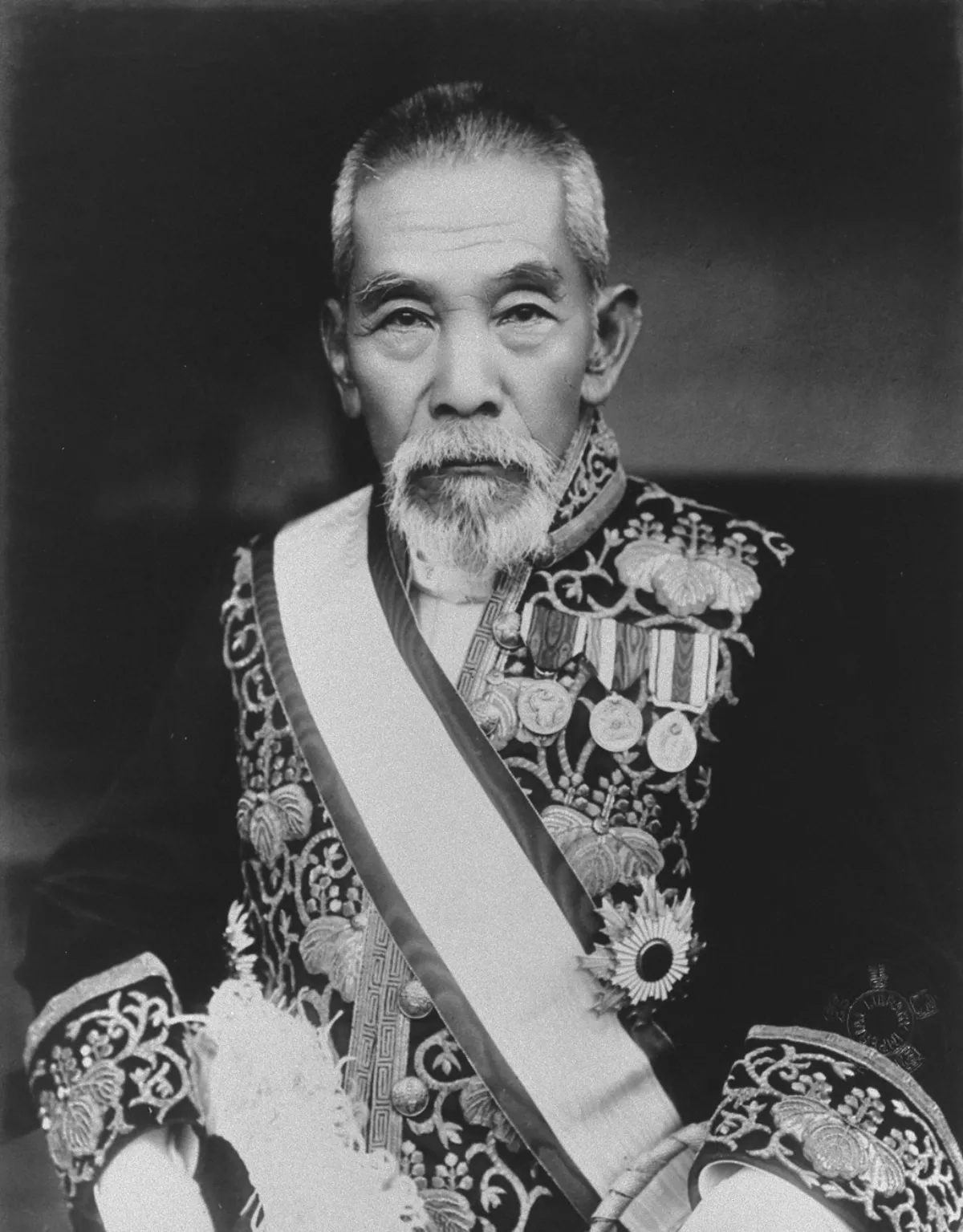 1.
1. Inukai Tsuyoshi was a Japanese statesman who was prime minister of Japan from 1931 to his assassination in 1932.

 1.
1. Inukai Tsuyoshi was a Japanese statesman who was prime minister of Japan from 1931 to his assassination in 1932.
At the age of 76, Inukai was Japan's second oldest serving prime minister, after Kantaro Suzuki whose term ended at the age of 77.
Inukai Tsuyoshi was born 4 June 1855, in Kawairi, Kaya, Bitchu Province, the second son of Inukai Tsuyoshi Genzaemon, a samurai, district magistrate and local official.
Inukai Tsuyoshi's family was a branch of the Itakura clan, and were originally given a status that allowed them to wear a katana by the Niwase Domain.
In 1876, Inukai Tsuyoshi travelled to Tokyo and subsequently graduated from the Keio Gijuku where he specialized in Chinese studies.
Inukai Tsuyoshi went with the Imperial Japanese Army to the front during the Satsuma Rebellion as a reporter.
Okuma Shigenobu invited Inukai Tsuyoshi to help form the Rikken Kaishinto political party in 1882, which supported liberal political causes, strongly opposed the domination of the government by members of the former Choshu and Satsuma domains, and called for a British-style constitutional monarchy within the framework of a parliamentary democracy.
Inukai Tsuyoshi was first elected to the Lower House of the Imperial Diet in 1890, and was reelected 17 times, holding the same seat for 42 years until his death.
However, Ozaki's resignation did not end the crisis, which culminated with the fall of the Okuma administration, so Inukai Tsuyoshi's term lasted only eleven days.
Inukai Tsuyoshi was a leading figure in the successors to the Rikken Kaishinto, the Shimpoto, Kenseito and the Rikken Kokuminto, which eventually toppled the government of Katsura Taro in 1913.
Inukai Tsuyoshi was a strong supporter of the Chinese republican movement, visiting China in 1907, and subsequently lending aid to Sun Yat-sen during the Xinhai Revolution of 1911 which overthrew the Qing dynasty.
Inukai Tsuyoshi later assisted Sun when Sun had to flee to Japan after his attempt to overthrow Yuan Shikai failed.
Inukai Tsuyoshi had a deep respect for Chinese culture, and felt that Sino-Japanese cooperation was the cornerstone of Asian solidarity.
Inukai Tsuyoshi returned to the cabinet as Minister of Communications in the second Yamamoto Gonnohyoe administration from 1923 to 1924.
Inukai Tsuyoshi was concurrently Education Minister again for a four-day period in September 1923.
The Kakushin Club then merged with the Rikken Seiyukai, and Inukai Tsuyoshi continued as a senior member.
In July 1929, Inukai Tsuyoshi travelled to Nanjing, China, with several other Japanese delegates at the invitation of Chinese government to a memorial service for Sun Yat-sen.
In 1929, after the sudden death of Tanaka Giichi, Inukai Tsuyoshi became president of the Rikken Seiyukai.
Inukai Tsuyoshi was an outspoken critic of Japan's signing of the London Naval Treaty, which reduced military spending.
Inukai Tsuyoshi supported the actions of the Imperial Japanese Army in invading Manchuria in 1931, and rejected criticism from the League of Nations over the Mukden Incident.
Inukai Tsuyoshi immediately took steps to inflate the economy and to take Japan off the gold standard, implementing protectionist trade policies and attempting to stem Japan's trade deficit.
However, Inukai Tsuyoshi was forced to accede to a request by the Imperial Japanese Army to dispatch additional troops to Manchuria and to Tianjin, despite instructions as late as 23 December 1931 from Emperor Hirohito to maintain international trust per the Nine-Power Treaty in not attacking China, and on 27 December 1931 not to authorize any moves by the Kwantung Army to occupy Jinzhou.
However, Inukai Tsuyoshi still came under strong criticism for his efforts to rein in the military, while reformists criticized him for not going far enough.
Symbolically, Inukai Tsuyoshi withheld formal diplomatic recognition as a gesture of displeasure against the radical faction within the Imperial Japanese Army, and out of concern due to the rapidly worsening international relations with the United States, on which country Japan depended for much of its raw materials and capital investment.
Inukai Tsuyoshi was shot by eleven junior Navy officers in the Prime Minister's residence in Tokyo.